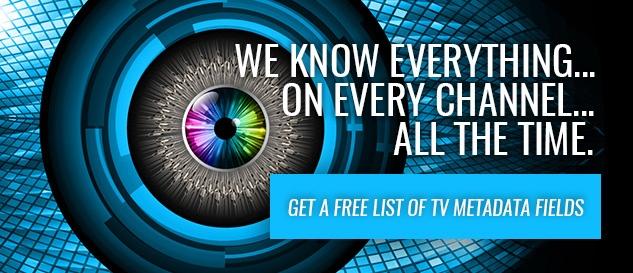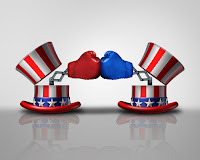It’s hard to believe just how much has changed since the
last U.S. national political conventions in 2012. Nowadays, there are a whole litany
of connected device apps and OTT platforms used by Americans to consume their
content, and the 2016 campaigns and teams are utilizing everything available to
them in an effort to share their messages.
“Less and less people are watching live television,” said Sam Osborne, digital director for the Republican National Convention (RNC). If you’re not using live streams, you “will not get your message out to the people that you need to reach.”
“TV is still really important,” added Teddy Goff, chief digital strategist for the Clinton campaign. “But things are changing really quickly.”
For both the RNC and the Democratic National Convention (DNC), which formally nominate their candidates for president and vice president, broadcast network CBS and Twitter have teamed up to host live streams of the speeches.
“Twitter is the fastest way to find out what’s happening in politics and to have a discussion about it,” said Anthony Noto, Twitter’s chief financial officer.
Facebook Live also partnered with numerous media businesses for streaming.
"This is the most engaged we've been at the convention and it’s highly correlated to the fact we have a lot of tools to offer,” Crystal Patterson, Facebook head of government and politics outreach, told Politico. "Our presence at the convention is different because our role generally in the conversation around elections is different."
Other companies established live streams of the gavel-to-gavel proceedings too.
Twitch, a service for gamers, setup a way to view the RNC and the DNC.
“We see this as a public service,” Twitch wrote in a blog post. “It’s an opportunity for you to engage in the political process, and with each other, during this election year without leaving your native habitat, using the social and communication tools you know and love.”
Bing created a special search query for those interested in learning more on the candidates, and it also allows users to stream conventions directly from the search engine.
And YouTube again took on the task of streaming both conventions, which it did during the last election cycle in 2012.
“We believe that access to more information can help everyone participate in the political process and we look forward to the YouTube community’s lively discussion as we prepare to elect our next president,” YouTube stated.
As there have been so many different methods for streaming these conventions, it’s become a bit challenging calculating the total amount of viewers for each in order to compare the numbers to previous years.
“Less and less people are watching live television,” said Sam Osborne, digital director for the Republican National Convention (RNC). If you’re not using live streams, you “will not get your message out to the people that you need to reach.”
“TV is still really important,” added Teddy Goff, chief digital strategist for the Clinton campaign. “But things are changing really quickly.”
For both the RNC and the Democratic National Convention (DNC), which formally nominate their candidates for president and vice president, broadcast network CBS and Twitter have teamed up to host live streams of the speeches.
“Twitter is the fastest way to find out what’s happening in politics and to have a discussion about it,” said Anthony Noto, Twitter’s chief financial officer.
Facebook Live also partnered with numerous media businesses for streaming.
"This is the most engaged we've been at the convention and it’s highly correlated to the fact we have a lot of tools to offer,” Crystal Patterson, Facebook head of government and politics outreach, told Politico. "Our presence at the convention is different because our role generally in the conversation around elections is different."
Other companies established live streams of the gavel-to-gavel proceedings too.
Twitch, a service for gamers, setup a way to view the RNC and the DNC.
“We see this as a public service,” Twitch wrote in a blog post. “It’s an opportunity for you to engage in the political process, and with each other, during this election year without leaving your native habitat, using the social and communication tools you know and love.”
Bing created a special search query for those interested in learning more on the candidates, and it also allows users to stream conventions directly from the search engine.
And YouTube again took on the task of streaming both conventions, which it did during the last election cycle in 2012.
“We believe that access to more information can help everyone participate in the political process and we look forward to the YouTube community’s lively discussion as we prepare to elect our next president,” YouTube stated.
As there have been so many different methods for streaming these conventions, it’s become a bit challenging calculating the total amount of viewers for each in order to compare the numbers to previous years.
Don't compare TV ratings to 4/8 years ago. Not about Trump or Romney, but American media habits. Traditional TV viewing not what it once was— Peter Hamby (@PeterHamby) July 22, 2016
The RNC and
DNC
each developed official apps for people at home to engage with their events as
well, both featuring live streams and 360-degree cameras.
Dirck Schou, the co-founder of Taqtile, the company that assisted the DNC, was pleased with the app’s functionality.
“It’s meant for the people that are going to the event, but
it’s also meant for people who are not in front of their TV or in front of
their computers and they want to watch the live videos. It’s a participation
tool for people that are either there in person or that are consuming it on
their mobile devices,” Schou said.
Audrey Scagnelli, the national press secretary for the RNC,
had similar sentiments.
“I think this app is one of the ways we're working to reach
people and communicate and share information that I think is really from a
digital perspective across many different platforms reaching different
audiences and really bringing the convention to anybody who's interested,”
Scagnelli said
in an interview with Adweek.
Also a new factor for 2016: Snapchat Live Stories.
Also a new factor for 2016: Snapchat Live Stories.
I don't think I've ever seen convention coverage like on Snapchat stories. It feels like being there in a way TV does not.— Farhad Manjoo (@fmanjoo) July 27, 2016
“The 2016 Democratic National Convention will use Snapchat to bring the convention experience to the viewer’s fingertips,” convention spokesman Morgan Finkelstein told USA TODAY. "Snapchat will provide a ton of different perspectives — from a delegate on the floor, to what it’s like to be backstage during the big event and everything in-between.”
“There are a lot of moments that people will be able to
watch on a lot of different platforms, but I think there’s something really
personal about having a Snapchat,” said
Scagnelli. “It’s raw, it’s in real time, I think it really brings the convention
right to you.”
The only technology that seems to be missing
from the festivities is virtual reality. Will 2020 conventions utilize this
quickly-evolving format to place viewers directly on the floor?
Author: Brian Cameron
Image via Shutterstock.
Author: Brian Cameron
Image via Shutterstock.
Follow @FYITV








Post a Comment